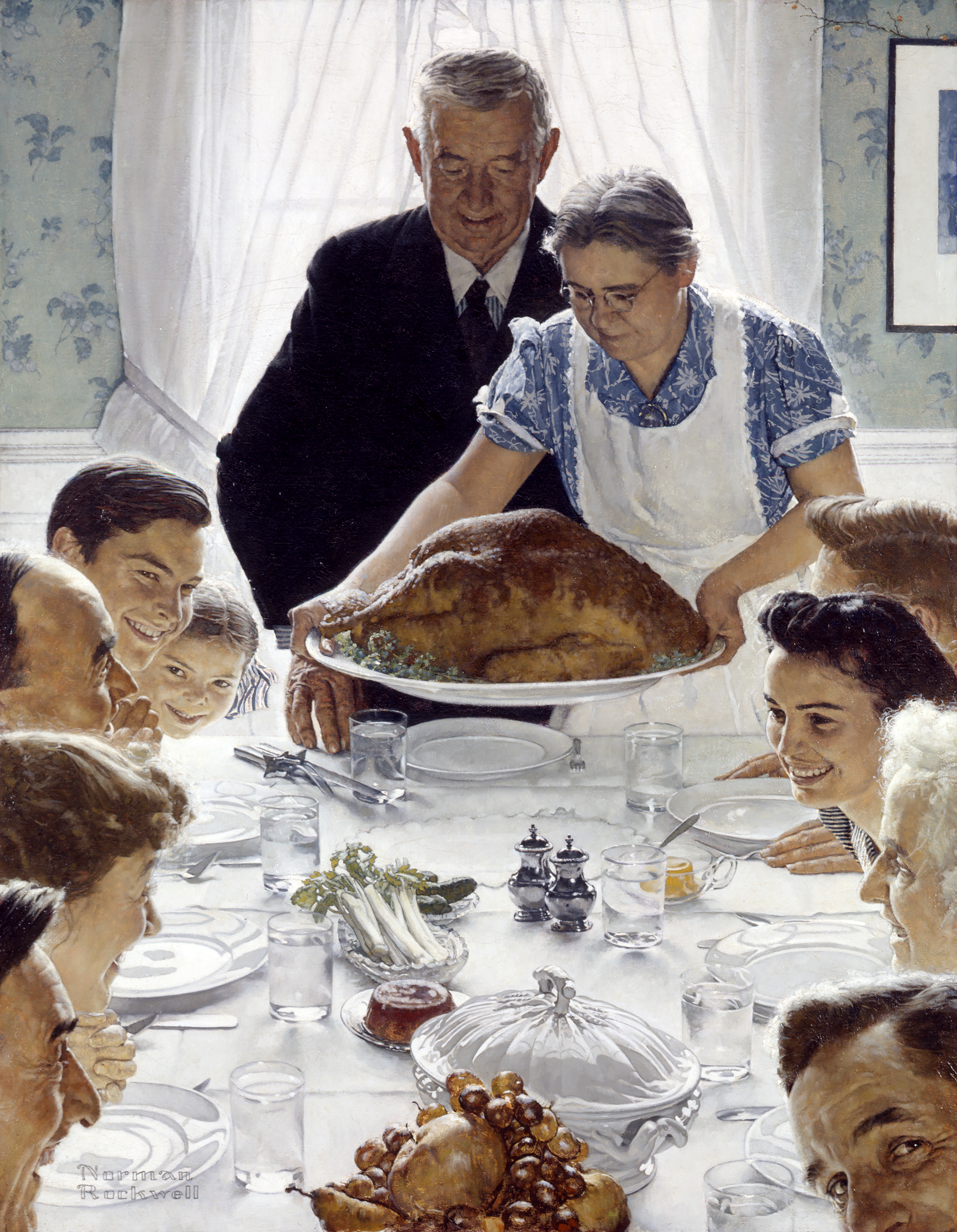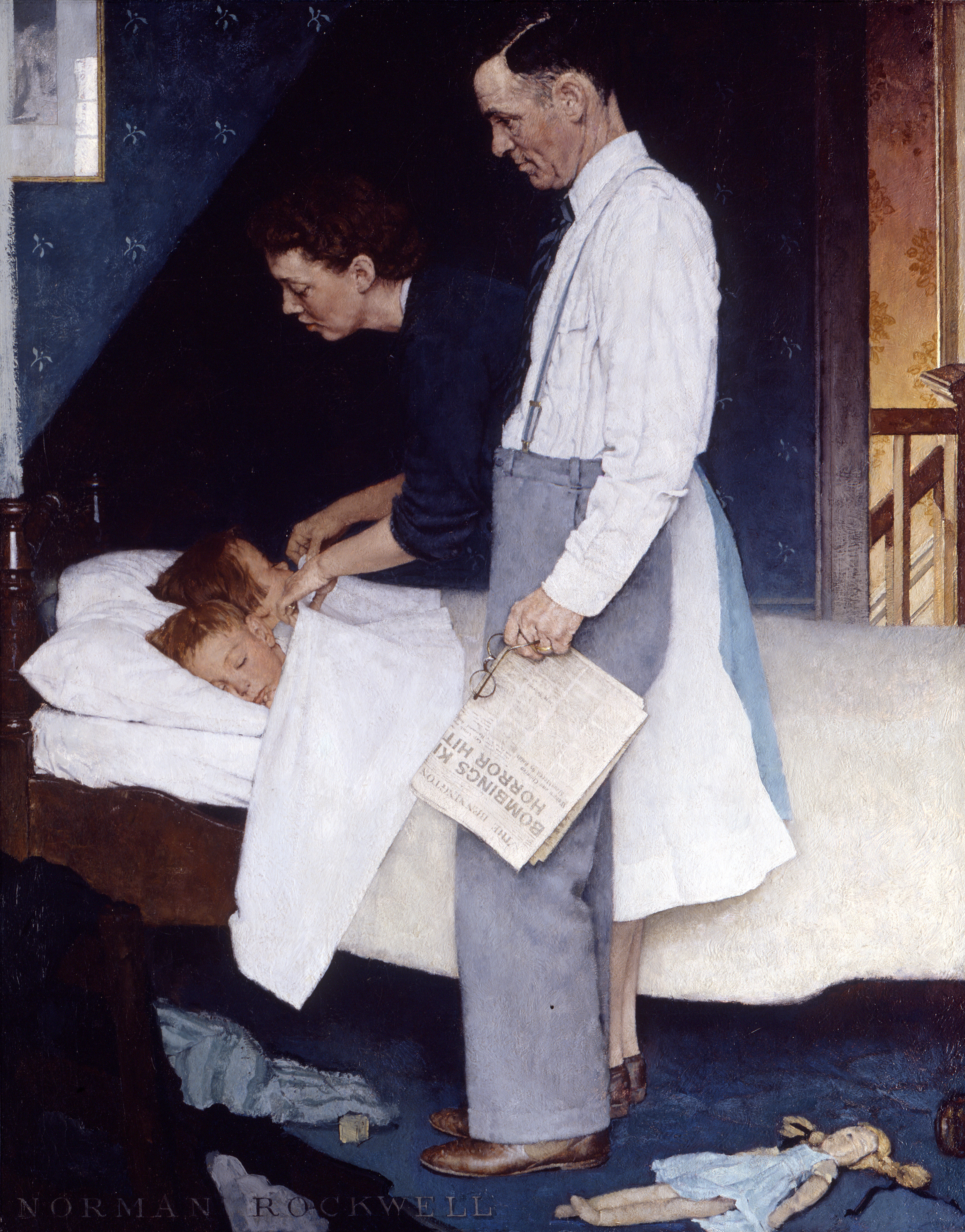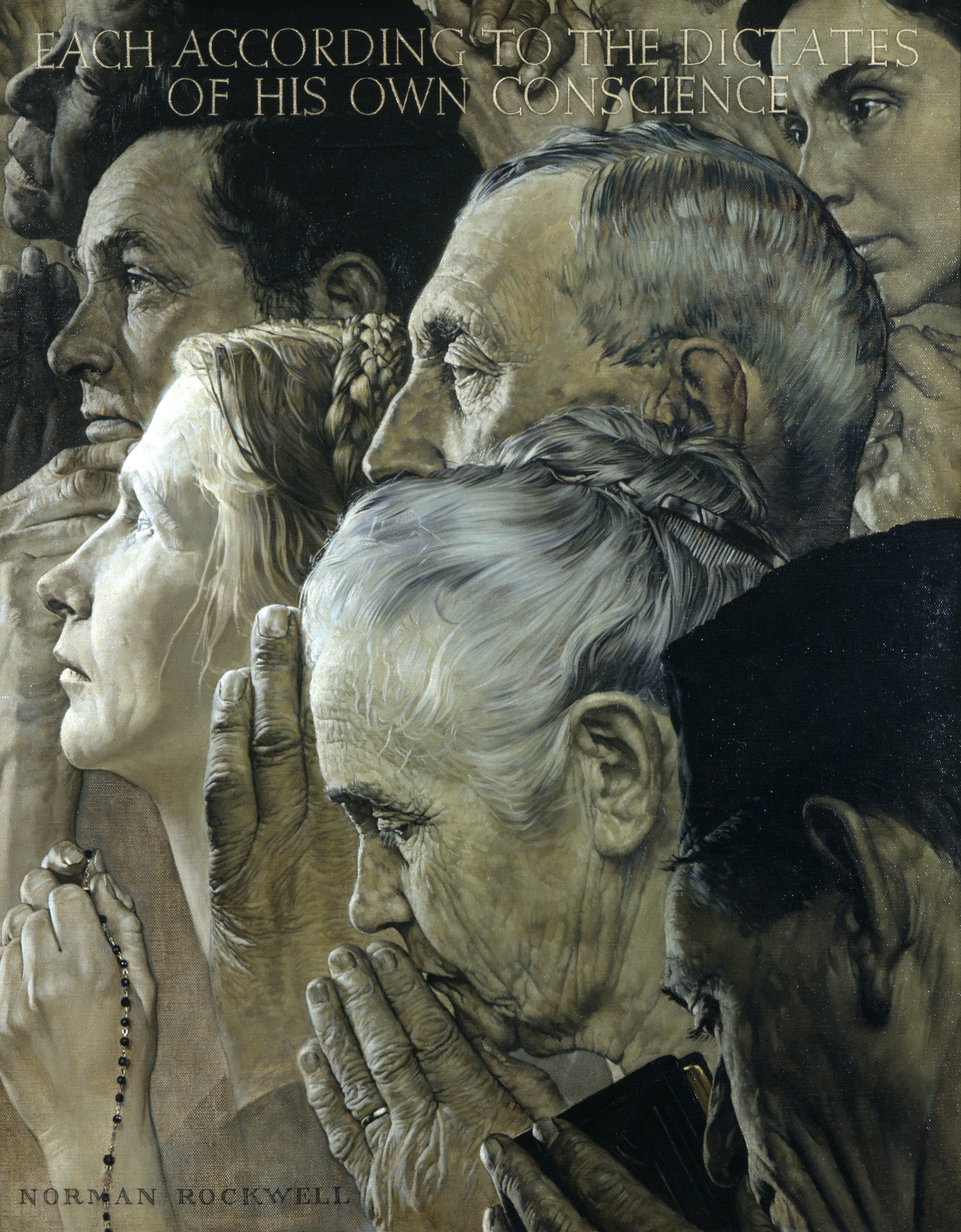Freedom Essay
Overview:
Students will compare and contrast the “Freedom” speech given by President Roosevelt in 1941 to the State of the Union address given President Obama in 2016 and/or President Trump's Address to Congress 2017. Students will write an argument comparing the significance of the “Four Freedoms” in the 1940’s to this decade. Students may identify areas of need in today’s world which warrant additional freedoms that need to be addressed.
Enduring Understandings/ Essential Questions:
- The Four Freedoms are as important today as they were in 1941.
- In our changing world, there is still work to be done to provide equal rights to all the nation and the world’s citizens.
- Are the Four Freedoms as important today as they were during the World War II era?
- Do these freedoms cover all of the human rights issues that arise today?
- Are there additional freedoms which we need to fight for so all people are treated equally, providing everyone with an opportunity to live a good life?
- Grade
- 9-12
- Theme
- Four Freedoms
- Length
- The activities will take 1 to 2 weeks.
- Discipline
- Social Studies; Language Arts: Reading History; Language Arts: Writing History
Objectives:
- Students will analyze and compare speeches given in recent times with President Roosevelt’s Four Freedoms Speech.
- Students will research present and past national and world events to support personal claims regarding importance of the Four Freedoms.
- Students will write a persuasive essay supporting or disputing the original Four Freedoms. In addition, students may through their research and knowledge of national and world events, name and support additional freedoms which are necessary for the sake of all people.
Background:
World War II began in 1939. The United States was not involved in the beginning of the war, however, President Franklin Roosevelt believed that the United States would eventually need to play a larger role. In January 1941, he made his speech to Congress. In his speech, President Roosevelt named the Four Freedoms, which he stated are the rights of everyone in the world. After the speech, in an effort to convey the underlying message of the Four Freedoms, the President reached out to the art world for help. Many artists created works to reflect the meaning of these freedoms in the form of paintings, sculptures, prints, musical compositions, and more. Norman Rockwell thought a lot about these ideals. In February and March of 1943, his completed Four Freedoms illustrations were published in The Saturday Evening Post, each along with a related essay. Exceedingly popular at the time and distributed widely as prints and posters, Norman Rockwell's illustrations raised over 132 million dollars toward the war effort through the purchase of war bonds. Prints of Rockwell’s Four Freedoms were given as premiums when people purchased war bonds in varying denominations. His illustrations became the face of the Four Freedoms and they continue to represent the meaning of these freedoms today.
Materials:
Multimedia Resources
Freedom from Want
Freedom from Fear
Freedom of Speech
Freedom of Worship
President Roosevelt's Freedom Speech
Norman Rockwell's Four Freedoms
Norman Rockwell Museum
Franklin D. Roosevelt's Four Freedoms
Norman Rockwell Museum
Classroom Supplies:
- President Roosevelt’s Freedom Speech:
- President Obama’s State of the Union Address 2016
- President Trump’s Address to Congress 2017
- An auditory version of FDR’s speech is available at the following link:
https://drive.google.com/open?id=0B18l3IS3A8UlSjJLclVyaFYtODg
- Access to newspapers, periodicals, books, and Internet for research
Activity:
- Students should have had opportunity to close read and discuss the original illustrations representing the Four Freedom prior to beginning this work.
- Students will closely read President Roosevelt's Annual Message to Congress (1941), President Obama’s State of the Union Address (2016), and/or President Trump's Address to Congress (2017), marking the text as they read.
- After reading each text, a group discussion(s) should be scheduled to offer students opportunity to clarify meaning of the texts and think more deeply about the significance of these speeches.
- While engaged in research, students will note take evidence supporting, or disputing the importance of the four freedoms during the present day.
- Students should be offered opportunities to engage in conversations and reflection about the research and their thinking about their findings in relation to the texts that they read.
- Students will write an argument, supporting or disputing an ongoing need for the four original freedoms. Their essays should compare and contrast the need for the freedoms during World War II versus today. They may name and support additional freedoms that they can support as being needed in today’s world.
Assessment:
- As students engaged in close reading of speech texts, did they mark text to elevate thinking and understanding?
- Did student use a variety of resources to research national and world events?
- In their essay, did students compare and contrast the similarity or differences of these eras and provide supporting evidence?
- Did students clearly state their claims and provide support for them?
Standards
This curriculum meets the standards listed below. Look for more details on these standards please visit: ELA and Math Standards, Social Studies Standards, Visual Arts Standards.
- CCSS.ELA-Literacy.RI.11-12.1
- Cite strong and thorough textual evidence to support analysis of what the text says explicitly as well as inferences drawn from the text, including determining where the text leaves matters uncertain.
- CCSS.ELA-Literacy.RI.11-12.2
- Determine two or more central ideas of a text and analyze their development over the course of the text, including how they interact and build on one another to provide a complex analysis; provide an objective summary of the text.
- CCSS.ELA-Literacy.RI.11-12.3
- Analyze a complex set of ideas or sequence of events and explain how specific individuals, ideas, or events interact and develop over the course of the text.
- CCSS.ELA-Literacy.RI.11-12.4
- Determine the meaning of words and phrases as they are used in a text, including figurative, connotative, and technical meanings; analyze how an author uses and refines the meaning of a key term or terms over the course of a text (e.g., how Madison defines faction in Federalist No. 10).
- CCSS.ELA-Literacy.RI.11-12.5
- Analyze and evaluate the effectiveness of the structure an author uses in his or her exposition or argument, including whether the structure makes points clear, convincing, and engaging.
- CCSS.ELA-Literacy.RI.9-10.1
- Cite strong and thorough textual evidence to support analysis of what the text says explicitly as well as inferences drawn from the text.
- CCSS.ELA-Literacy.RI.9-10.2
- Determine a central idea of a text and analyze its development over the course of the text, including how it emerges and is shaped and refined by specific details; provide an objective summary of the text.
- CCSS.ELA-Literacy.RI.9-10.3
- Analyze how the author unfolds an analysis or series of ideas or events, including the order in which the points are made, how they are introduced and developed, and the connections that are drawn between them.
- CCSS.ELA-Literacy.RI.9-10.4
- Determine the meaning of words and phrases as they are used in a text, including figurative, connotative, and technical meanings; analyze the cumulative impact of specific word choices on meaning and tone (e.g., how the language of a court opinion differs from that of a newspaper).
- CCSS.ELA-Literacy.RI.9-10.5
- Analyze in detail how an author's ideas or claims are developed and refined by particular sentences, paragraphs, or larger portions of a text (e.g., a section or chapter).
- CCSS.ELA-Literacy.RI.9-10.9
- Analyze seminal U.S. documents of historical and literary significance (e.g., Washington's Farewell Address, the Gettysburg Address, Roosevelt's Four Freedoms speech, King's "Letter from Birmingham Jail"), including how they address related themes and concepts.
- CCSS.ELA-Literacy.WHST.11-12.1
- Write arguments focused on discipline-specific content.
- CCSS.ELA-Literacy.WHST.11-12.10
- Write routinely over extended time frames (time for reflection and revision) and shorter time frames (a single sitting or a day or two) for a range of discipline-specific tasks, purposes, and audiences.
- CCSS.ELA-Literacy.WHST.11-12.8
- Gather relevant information from multiple authoritative print and digital sources, using advanced searches effectively; assess the strengths and limitations of each source in terms of the specific task, purpose, and audience; integrate information into the text selectively to maintain the flow of ideas, avoiding plagiarism and overreliance on any one source and following a standard format for citation.
- CCSS.ELA-Literacy.WHST.11-12.9
- Draw evidence from informational texts to support analysis, reflection, and research.
- CCSS.ELA-Literacy.WHST.9-10.1
- Write arguments focused on discipline-specific content.
- CCSS.ELA-Literacy.WHST.9-10.10
- Write routinely over extended time frames (time for reflection and revision) and shorter time frames (a single sitting or a day or two) for a range of discipline-specific tasks, purposes, and audiences.
- CCSS.ELA-Literacy.WHST.9-10.8
- Gather relevant information from multiple authoritative print and digital sources, using advanced searches effectively; assess the usefulness of each source in answering the research question; integrate information into the text selectively to maintain the flow of ideas, avoiding plagiarism and following a standard format for citation.
- CCSS.ELA-Literacy.WHST.9-10.9
- Draw evidence from informational texts to support analysis, reflection, and research.
- D1.5.9-12.
- Determine the kinds of sources that will be helpful in answering compelling and supporting questions, taking into consideration multiple points of view represented in the sources, the types of sources available, and the potential uses of the sources.
- D2.His.1.9-12.
- Evaluate how historical events and developments were shaped by unique circumstances of time and place as well as broader historical contexts.
- D2.His.2.9-12.
- Analyze change and continuity in historical eras.
- D2.His.3.9-12.
- Use questions generated about individuals and groups to assess how the significance of their actions changes over time and is shaped by the historical context.
- D2.His.9.9-12.
- Analyze the relationship between historical sources and the secondary interpretations made from them.
- D3.3.9-12.
- Identify evidence that draws information directly and substantively from multiple sources to detect inconsistencies in evidence in order to revise or strengthen claims.
- D3.4.9-12.
- Develop claims and counterclaims attending to precision, significance, and knowledge conveyed through the claim while pointing out the strengths and limitations of both.
- D4.1.9-12.
- Construct an argument using precise and knowledgeable claims and evidence from multiple sources, while acknowledging counterclaims and evidentiary weaknesses.
- D4.2.9-12.
- Construct explanations using sound reasoning, correct sequence (linear and non-linear), examples and details with significant and pertinent information and data, while acknowledging the strengths and weaknesses of the explanation given its purpose (e.g., cause and effect, chronological, procedural, technical).



